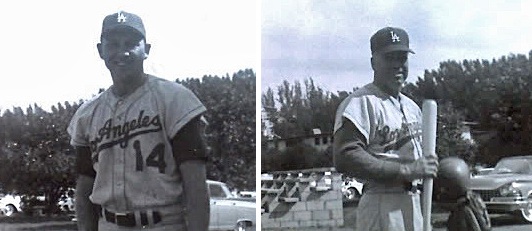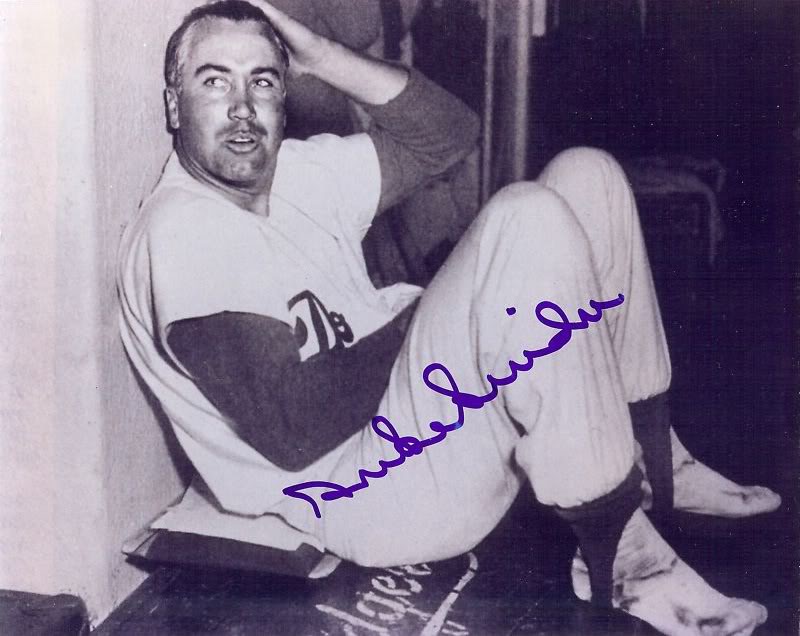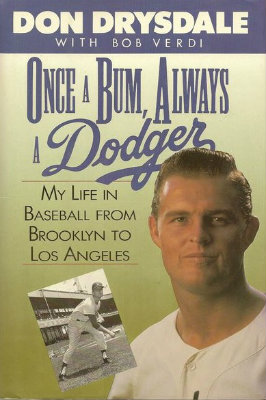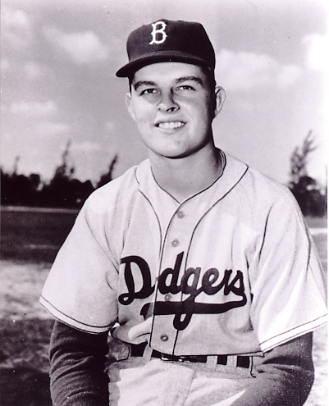Anybody who has known me for more than ten minutes knows that my all-time favorite Dodger is Hall of Famer Don Drysdale. Why, you ask? Because Don always played the game the right way. He was intimidating… even feared, yet he was as loyal to his teammates and to the Dodger organization as anyone could ever be.
So why, then, did it take me over 22 years to read his autobiography “Once a Bum, Always a Dodger” which was published in 1990? The answer to that one is simple – I never knew the book existed until informed about it by my good friend Will Isabella, who himself has been a Dodger fan his entire life and who also just so happens to live in New York.
On Will’s recommendation (not that it took a whole lot of coaxing), I decided to buy the book and found one on eBay for all of four bucks. My timing was impeccable, as it arrived just before I was due to fly to New York (Brooklyn, in fact) to visit my daughter, who lives there. “Perfect! A good book for a five-hour flight,” I said to myself; and aside from a brief nap and eating a bag of stale potato chip during my flight, I absolutely could not put this book down.

Drysdale had tremendous respect for the veteran players, especially Gil Hodges and Duke Snider seen here during spring training 1961. (Photos courtesy of Linda Valkenburg)
The very first thing that I learned about Don Drysdale from this book is that in spite of his reputation of being one of baseball’s greatest intimidators, he was actually a very kind and humble man. The next thing that I learned about him is that he always knew his place, especially as a minor leaguer and as a rookie. This from the book:
Though we used to have our workouts and play our games at Vero Beach in 1955, we were actually based in Miami, at the MacAlister Hotel, an old pink building at the corner of Biscayne and Flagler. I was all by myself one hot afternoon following the day’s work, so I strolled over to this little bar called the Sportsman’s, where they had fifteen-cent draft beers. I figured I’d sit down and have a few cold ones while I decided where to go to dinner and what to eat. No sooner had I downed my first beer when I looked up and who came walking through the door but Snider and Hodges and Reese and Rube Walker. Well, my eyes got bigger than horse turds when I saw them stroll in. I got up and started to leave. I figured I didn’t belong there.
“Where do you think you’re going?” Hodges asked.
“Well… I was just heading out,” I said.
“You’re not going anywhere,” they told me.
That was that. I went over and sat at a table with them and just listened. If I said something, it was quick and to the point, and then I went back to listening. They had a lot more to say than I did, anyway, with their stories I was like a pig in slop just being able to be a part of all of this. I remember buying a round or two, but not as many as the veterans bought. They were looking after the kid, I guess, but that was the Dodger way. The players on the team had such camaraderie. They had seen me getting up to leave and could have let me go right through the door, but they didn’t.

“The routine in those days was to sit around and chew the fat, before and after games, hashing over the game you just played or were about to play… I don’t know what these players talk about today, but I don’t think it’s baseball.” – Don Drysdale
Can you even imagine this happening now… with all of the multi-million dollar prima donnas in the game today? Not a chance. Even in 1989 when Drysdale was writing this book, he noticed that the game had changed, and not for the good:
Just by sitting around and listening to those great veterans talk baseball, you had to learn the game. If you didn’t it was because you didn’t want to. Simple as that. In Philadelphia, where I won my first game, The visiting clubhouse attendant always presided over a cooler that was well stocked with Schlitz beer, with a few cans of orange and grape drink on the side. A few years ago I was back in Philadelphia and I saw him – “Ace” was his name – and he brought me inside to his cooler.
“Look at this,” he said. “You don’t think times have changed?”
Had they ever. The cooler was three-quarters orange and grape drink, with only a few cans of beer. I suppose that proves that the players nowadays don’t drink as much alcohol, which is good in a way. It also shows me that these modern players don’t hang around the clubhouse and talk baseball the way they used to, which I think is bad. Not only bad, but sad. Now that I’m in broadcasting on a daily basis, I can sense that without having to look inside of a cooler. All I have to do is peek inside a locker room after a game. Some nights it like a fire drill. Players rush to take off their uniforms, and rush into the shower, and then rush to get on the team bus headed back to the hotel, or into their private cars. That wouldn’t have worked with the old Brooklyn Dodgers that I knew. You wouldn’t have wanted it to. The routine in those days was to sit around and chew the fat, before and after games, hashing over the game you just played or were about to play. There was a lot of conversation about baseball, but you don’t hear that anymore. I don’t know what these players talk about today, but I don’t think it’s baseball.
Another part of the book that I really enjoyed is the chapter about when Drysdale roomed with veteran pitcher Sal Maglie, from whom Drysdale learned his intimidation skills.
I learned a lot about pitching, a lot about baseball, a lot about life from Sal, who was called “The Barber” because when he was on the mound and a batter dug in, he specialized in giving him a close shave.
And then there was this exchange from Gil Hodges, who also roomed with Drysdale:
“How do you feel about knocking down a batter?” Hodges asked me one day.
“I’ll do it, sure,” I said. “You have to make the guys on the other team respect you.”
“But wouldn’t you feel bad if you hit a guy in the head and hurt him?” Hodges went on.
“Nope.” I answered.
“Well,” said Hodges “What about if you hit a guy in the head with a baseball and killed him? Would you regret that?”
“Nope,” I said. “I wouldn’t at all.”
Hodges walked away convinced that I was some kind of a killer. Actually, I just wanted to put one over on him for a change…
There was a bit of truth to what I said about being willing to knock a guy down – though not about wanting to hurt anyone – but I thought I’d try to have some honest fun at Gil’s expense for a change. I think it worked.
Although I am only about half way through the Drysdale book, I am thoroughly enjoying it and recommend it to every baseball fan. In fact, it should be mandatory reading for every Major (and Minor) League baseball player. It will bring tears to the eyes of you old school baseball guys who miss the way that things used to be; you know… the Dodger way.




 July 21st, 2012 at 4:11 am
July 21st, 2012 at 4:11 am  by Ron Cervenka
by Ron Cervenka 

 Posted in
Posted in 

Ah, if only we could return to The Dodger Way…but there’s hope with Lopes, Yeager, and Hatcher back maybe they can restore that kind of thinking and behavior to the team! Great post, Ron, I look forward to your follow up when you finish the book.
To me the decline and fall of the Dodger empire was the death of the Dodger Way. Looking for an easy way to do something rather than working for it rarely bears satisfactory results. The Dodgers started looking for a quick fix beginning after the 1988 WS. It is difficult to know what the effect of losing Al Campanis was. He was 71 when he was fired so one doesn’t know how the next few years might have played out.
I just ordered the book. Thanks for sharing Ron
Ron, hearing you talk about the book is giving me the urge to read it again. It’s been over twenty years since I read it and there are a few stories from it that a still remember, but a lot of it I forgot. It will be a great read during the off season. The best thing I got out of the book was the quote from the title, “Once A Bum Always A Dodger.” That’s a perfect description of my journey as a Dodger fan.
I have that book. It has a different cover – picture of Don in a suit, with a microphone, and Ebbets Field in the background.
Yours is a later print, Harold. I was very fortunate that mine is a first print, which gives it increased value for collectors (which I’m not). Not bad for four bucks INCLUDING shipping on eBay.
Here is yours: